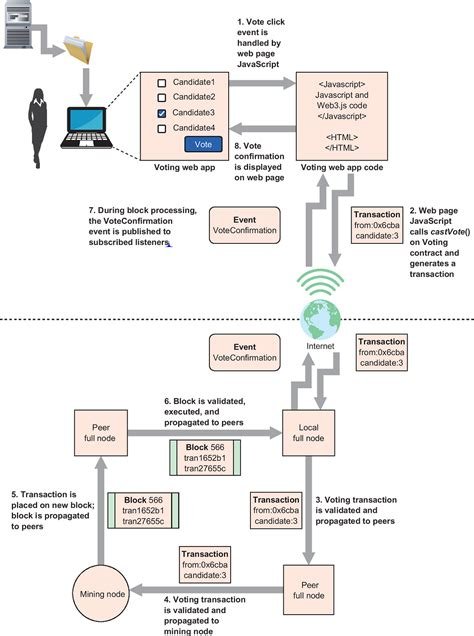Understanding the Relationship Between Transactions and Blocks in Ethereum
As a beginner in the world of cryptocurrency, you’re likely to encounter terms like “transactions” and “blocks,” and wondering how they relate to each other. In this article, we’ll break down the relationship between transactions and blocks in the Ethereum blockchain.
What are Transactions?
In simple terms, a transaction is a sequence of actions that involves transferring assets or data from one party to another on the Ethereum network. Think of it as a list of instructions that specify who, what, and where the transfer should take place. For example:
- “Send 10 Ether (ETH) from Alice to Bob”
- “Transfer a new wallet address for John”
What are Blocks?
A block is a collection of transactions that have been verified by the network as valid and secure. It’s like a container that holds all the transactions in a specific order, ensuring that they’re executed in a particular way.
In Ethereum, each block is divided into several fields:
- Vocabulary: The header section contains information about the block, such as its timestamp, hash, size, and difficulty level.
- Header

: The main body of the block, which contains the transactions and their corresponding inputs (if any).
- Body: The list of transactions within the block.
The Relationship Between Transactions and Blocks
Now that we’ve defined both terms, let’s dive into how they relate to each other:
- A transaction is created as part of a block: When a new block is mined, it includes a list of all the transactions in its body. Each transaction is linked to the previous one through their hashes.
- Transactions are verified and validated by nodes: Before a block can be included in the blockchain, all involved nodes must agree on its validity. This process ensures that the transactions within a block meet specific criteria (e.g., correct sender-receiver relationships).
- A new block is created as part of a transaction: When a valid block is mined, it’s essentially creating a new set of transactions and storing them in the blockchain.
- The block hash serves as a reference to previous blocks: Each block includes a unique hash that references all the preceding blocks. This link ensures that transactions are correctly linked and builds upon previous state.
Example Walkthrough
To illustrate this relationship, let’s consider an example:
Alice wants to send 10 ETH from her wallet to Bob. Here’s what happens:
- Alice creates a transaction specifying the recipient (Bob) and amount (10 ETH).
- The transaction is added to a block, which is then included in a new block.
- The new block includes a list of all transactions within it, including the original transaction from Alice.
- The block hash serves as a reference to previous blocks, ensuring that this specific transaction is correctly linked.
In summary:
- Transactions are individual instructions that specify who, what, and where data or assets should be transferred.
- Blocks contain a collection of verified transactions, with each transaction linked to the previous one through their hashes.
- The block hash serves as a reference to previous blocks, ensuring correct linking and building upon previous state.
By understanding this relationship between transactions and blocks, you’ll become more comfortable navigating the world of Ethereum and its underlying mechanics.